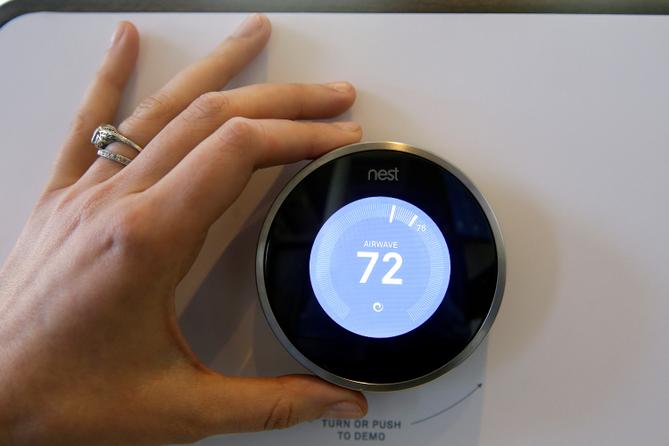This article is made possible through Spotlight PA’s partnership with NOTUS, a nonpartisan news organization that covers government and politics with the fresh eyes of early career journalists and the expertise of veteran reporters.
Money is starting to run out for the 6 million Americans who rely on federal aid to keep the lights on and the heat running in the winter.
As the government shutdown drags into its fourth week, states are draining the coffers used to help low-income Americans cover their energy bills and prevent utilities from shutting off their power and gas.
“As winter is coming, I’m worried, frankly, and I don’t say that lightly,” said Katrina Metzler, the executive director of the National Energy and Utility Affordability Coalition, or NEUAC. “We’re running out of resources here, and so we’re reaching a tipping point.”
Utah paused applications for the Low-Income Home Energy Assistance Program, or LIHEAP, altogether in October. While the state will likely reopen applications in November, no benefits will be awarded until after the shutdown ends and money is distributed by the federal government, according to a spokesperson for the state government.
Pennsylvania, North Carolina, Maryland, and Minnesota were among the many states that announced they are at risk of not being able to provide the annual assistance many people depend upon as winter approaches. Even if the shutdown had ended Tuesday, Maryland forecasted that it would not be able to distribute new energy assistance funds until at least December.
Mississippi won’t see effects until January, if the shutdown drags that long, according to a spokesperson for the state.
The money is running out for energy assistance just as electricity bills are increasing at record rates in parts of the country. For people who heat their homes with electricity, costs are projected to increase by an average of just over 10% this winter compared to last year, according to a September analysis from the National Energy Assistance Directors Association, or NEADA.
LIHEAP, which is run by the Department of Health and Human Services, distributes about $4 billion each year to all 50 states, which then funnel the money to the lowest-income Americans to help them cover the cost of their energy bills.
Even when the program is fully funded, Metzler said it can only serve roughly one out of five eligible households.
In October, at the beginning of each fiscal year, HHS typically processes applications from states and then takes about a month to actually get the money out the door, just as states use up the last of their funds from the previous year. This year, the government shutdown prevented that process from happening.
Even if the government were to reopen tomorrow, it could take four to six weeks to process state applications and get the money moving, said Mark Wolfe, the executive director of the NEADA, the policy organization for LIHEAP state directors.
And that’s assuming HHS works at its normal pace. That might not be possible, because almost the entire staff of the LIHEAP program were laid off in the spring during a reduction in force at HHS. “That will definitely slow down the process,” Wolfe said.
The Trump administration proposed eliminating LIHEAP in its budget for the 2026 fiscal year, but a bipartisan group of senators and House lawmakers are defending the program in appropriations plans.
HHS did not answer NOTUS’ questions about the staffing issues.
“The Democrat-led shutdown is preventing states from receiving new funds under the Low-Income Home Energy Assistance Program,” an HHS spokesperson said. “The Trump Administration is committed to reopening the government for the American people. Once the government reopens, (the Administration for Children and Families) will work swiftly to administer annual awards.”
There are some fallback options if the government is funded soon, experts say. Faith-based organizations often provide some energy assistance for those who can’t access LIHEAP. And the NEUAC is working with state leaders and utility companies to urge them to commit to preventing anyone from having their power or gas shut off during a funding shortfall.
Many states prohibit utility shutoffs during the colder months, but several have very limited or no protections at all. That list includes many states with cold winters, such as Alaska, North Dakota, South Dakota, Kentucky, Tennessee, Nebraska, and Ohio, according to LIHEAP data. Florida, Hawaii, and South Carolina also have limited protections.
Even in states where utility shutoff prohibitions are standard, there are usually no prohibitions on halting the delivery of fuel for home heating. Delivered fuel is the primary heating source for about 80% of homes in the northeastern United States.
That fuel may not be delivered to people who don’t have the ability to pay for it, according to Wolfe.
“Think of the grandma who lives on a fixed Social Security income and gets LIHEAP applied to her bill sort of automatically every year,” Metzler said. “And then she gets approved for a LIHEAP, but this time she doesn’t see the benefit. The next month, she’s going to be very confused about why that’s happening. Why she still has late fees, and why she got another bill, and why it wasn’t paid. And is her power going to be turned off? Is her natural gas going to be turned off? Is she not going to get a fuel delivery?”
